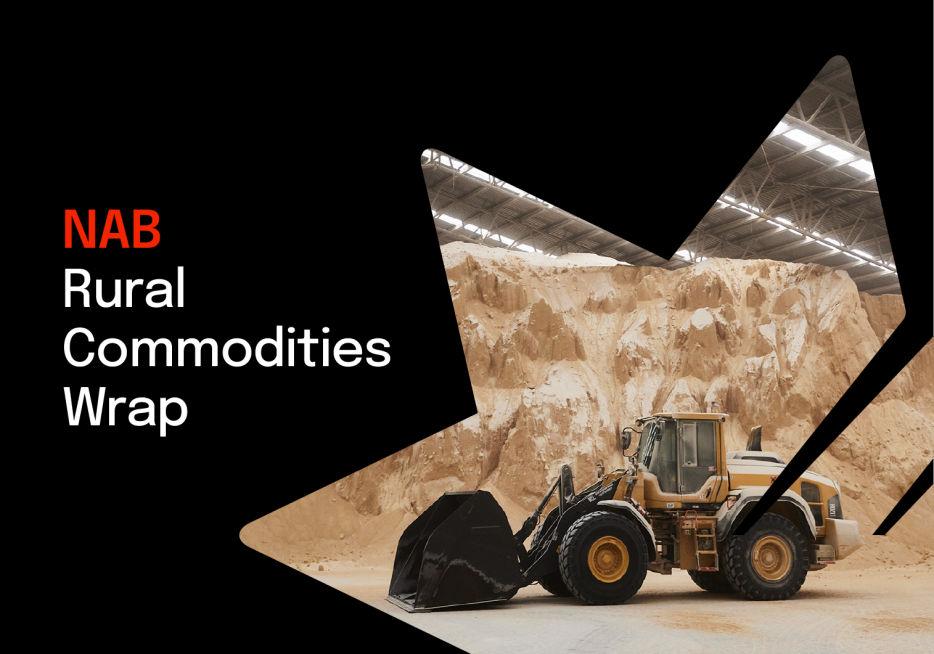The NAB Rural Commodities Index continued its upwards momentum and increased 1.4% month-on-month in May. The index is around levels seen in February 2023.

Report
Healthy, delicious, sustainable – and as Australian as you can get. Kangaroo meat’s praises are being sung by chefs, and farmers would love to see increased harvesting of the animals. But local consumers remain slow to put it on their regular shopping list.

One of Australia’s top chefs Jock Zonfrillo scratches his head about why kangaroo remains an under-utilised meat, both in Australian homes and restaurants.
The Scottish-born chef, who serves kangaroo at his acclaimed high-end Adelaide restaurant Orana and the more casual Street-ADL, says diners are always impressed by the meat’s flavour.
“Kangaroo’s one of those products that when people eat it they say, ‘My God that’s delicious’,” says Zonfrillo. “The reaction’s always the same, and it’s one of the most liked dishes on the menu.”
Zonfrillo has served kangaroo every day at his restaurant since opening it more than two years ago, as well as on the menu at his previous restaurant at Magill Estate winery, and is a big fan. A champion of the use of Australia’s unique native ingredients, he says kangaroo is a sustainably-harvested, plentiful meat offering good opportunities for chefs. “It’s got great flavour and great texture,” he says. “There are different parts and cuts you can use for different purposes.
“There will always be people who say they won’t eat anything from the coat of arms … but it is a legitimate and very enjoyable meat. It’s a very sustainable product and it’s unique to Australia.”
But Zonfrillo says being able to source a consistent quality product remains a challenge for him, a factor he believes is holding back its growth. And he’d love to see more innovation in the industry.
“One of the problems is the supply chain, and that’s where I think the work should start,” he says. “For a start recognising that there are different species of kangaroo, and also the regionality of the meat – the same species reared in different regions will have a different flavour and texture.
“The supply chain needs some work and some investment from the Government in terms of the possibilities of the meat and research and development. If the Government did that, we could do some amazing things.”
Local consumption growing
Victor Bates, Managing Director of Southern Game Meat (SGM) – which pioneered the development of the kangaroo meat market in the 1960s – says its local sales of kangaroo meat for consumption have grown “steadily but slowly” by about five per cent a year over the past five years. Today the Sydney-based company processes 25 tonnes of kangaroo meat a week with around five tonnes exported to countries including Papua New Guinea and Vietnam and the rest sold domestically. He says just over half of the company’s locally-sold product goes to the human consumption sector and the rest for pet food.
Bates says while SGM in the past actively tried promoting kangaroo meat with tastings at food fairs and festivals to get people trying it they had now pulled back on that. He says the big challenge for stronger growth in the domestic consumption market continues to be overcoming consumer attitudes to kangaroo meat and a lack of awareness that means it’s not top of mind when people are at the supermarket.
“We use to be very active, we spent a lot of money promoting it in Australia, but we don’t do it now,” says Bates. “It was too expensive for the results we were getting. We’ve given out samples to thousands of people and they all say it’s nice, but then they’ll walk past us making the Skippy noise.”
Bates says the company’s sights are now firmly on the Chinese market, which he predicts to deliver an explosion in demand once the trade is established.
“I’ve no doubt the Chinese market will be very good,” he says. “We’ve done a lot of work over the past six or so years on the market, and it’s getting close to finalising that. [Kangaroo meat] fits well with the Chinese cooking style.”
Kangaroos costing farmers
An increase in demand would be good news for farmers battling the impact of large numbers of kangaroos.
Kangaroo numbers have boomed in past years with professional shooters taking only a fraction of the numbers allowed under the Government’s quotas because of the lack of demand for the meat.
The Department of Environment figures issued a sustainable harvest quota of 8,194,624 kangaroos for 2014, but the industry only harvested 1,645,930.
NSW angora goat producer Roger Clark says the growing numbers of kangaroos on his Boorowa property are a continuing headache because of fence damage and competition for feed. He estimates the annual cost to his operation at about $50,000 a year.
“It costs farmers a lot of money, and people tend to ignore that bit,” Clark says. “It’s a weekly job checking boundaries. The kangaroos go through them and burrow holes underneath, and the goats follow.
“Then there’s the cost of what they eat. I reckon we’d have about 400 on the property. And there’d be other farmers with a lot more kangaroos than us. They’re certainly at nuisance quantities, and there’s nothing stopping them. They’re not being harvested.”
Clark says it’s frustrating to see the resource isn’t being better utilised. While farmers are allowed to control a limited number of kangaroos on their properties animals must be left in the paddock.
“If they could find more of a market for it, harvest them in a sensible and humane way, make money and make the species more sustainable it has benefits all around. And it’s just a fantastic meat – it’s a wild food and very healthy. It’s my favourite protein, and the chefs and foodies love it.”
More from NAB:
© National Australia Bank Limited. ABN 12 004 044 937 AFSL and Australian Credit Licence 230686.